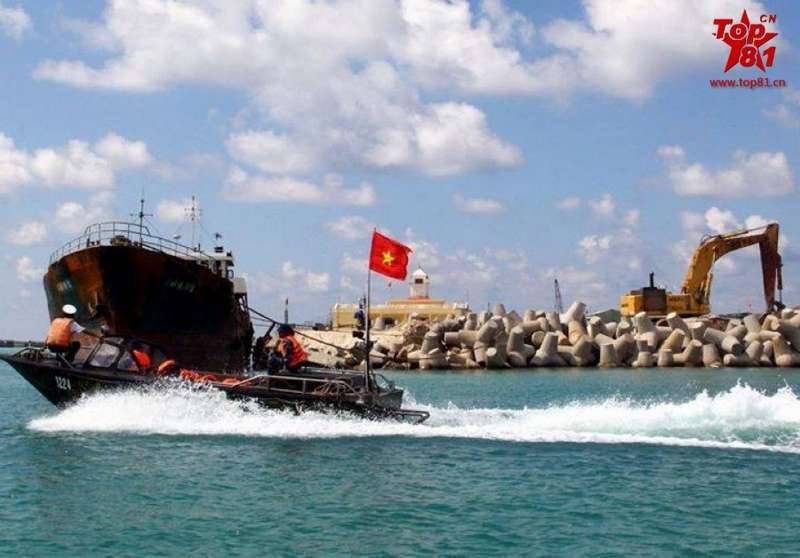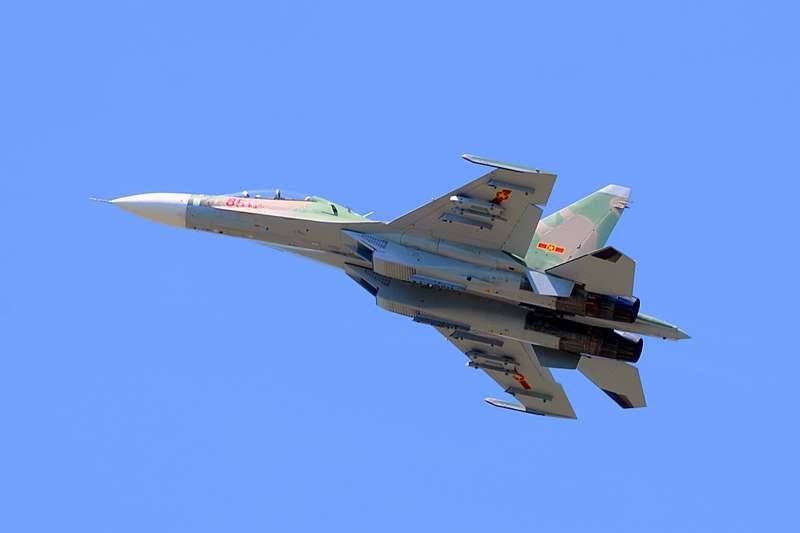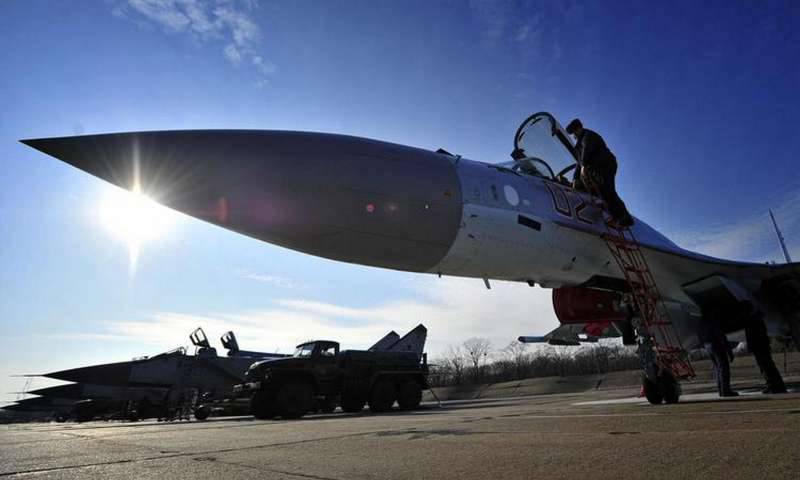“Limping” credibility of the purchase of “Rafale” and “Gripen” for the Vietnamese Air Force in the light of the “fight” for the Spratly
The lands of Southeast Asia regarding the plans of Hanoi to sign a new defense contract for the purchase of 4 ++ generation fighter jets are filled with rumors in order to maintain control over the disputed Spratly island archipelago in the South China Sea. And these rumors are the stronger, the more military-political support is provided to Vietnam by the United States. The Spratly environs are increasingly patrolling the long-range P-8A "Poseidon" anti-submarine aircraft, carefully watching the actions of the Chinese Navy and Air Force, and the American fleet plans to send unmanned secret MAPLs to frighten the PRC, whose existence has recently become known, on the sea itself. Many observers and agencies, calling what is happening “Vietnamese drift towards Washington and away from Russia,” start earning money by spreading rumors about Vietnam’s preparation of an agreement to acquire Western tactical aviation, explaining everything by shifting the foreign policy vector to the west.
For example, on April 25, the Internet resource defence-blog.com, citing Reuters, published news on consultations between Hanoi and Dassault and Saab companies on a possible contract for the 12 of the Rafale or Jas-39 Gripen fighters. Another unnamed source quickly questioned the Reuters message, calling it information leakage, and also published its data on the planned purchase of super-maneuverable multi-role X-NUMX ++ fighter jets from the Su-4C in the amount of several units from Russia, but there was no confirmation from either Vietnamese, nor by the Russian Federation. This can not push on certain reflections.
In trade and economic terms, Vietnam is indeed continuing to “drift in the waters” of the United States: the level of trade turnover between the states reached 38 billion dollars, with Russia the total is 4 billion dollars. First of all, this is due to the establishment of diplomatic relations with Washington, which were signed by 20 years ago. The Americans, seeing in Vietnam an excellent friendly base for spreading geostrategic influence in Southeast Asia, began to urgently support all the controversial problems of Hanoi, in particular, the territorial dispute over the Paracel Islands and the Spratly archipelago. First of all, in 2005, at a meeting between Fan Van Khai and Donald Rumsfeld in Washington, military cooperation was intensified between the countries, which later developed into the mainstream of intelligence sharing and training of Vietnamese military personnel in American military academies according to Western standards. All these initiatives finally strengthened after D. Rumsfeld’s visit to Vietnam in the summer of 2006, immediately after the free trade agreement with the USA came into force. In the course of this visit, the sacramental phrase that the States want to build a relationship path, "which is convenient for both, and others," came out of the mouth of the then US Secretary of Defense. It seems that the statement is based on foreign policy and economic relations, this statement is very simple, but there is also a deep far-reaching subtext, the result of which is now the militarization of the South China Sea, aimed at controlling the Chinese Navy from the disputed island archipelagoes.
Many interesting details of the US-Vietnamese cooperation will become known to the international media in May 2016, when B. Obama arrives on an official visit to Vietnam. But no matter how high-ranking officials of the West visit the republic, and whose Vietnamese enlistment support against the PRC, one thing will remain unchanged for a very long time - the military-technical element base of the SRV, which consists of 90% of Russian weapons.
For example, the Vietnamese Air Force is armed with X-NUMX multipurpose fighter Su-24MK30, 2 fighter-interceptor Su-7SK and 27 training-combat Su-5ББК. The first ones are capable of releasing the 27C / D Lanzhou / Kunming X-XNNXXM Ovod X-XNNMX Ovod missile with an active radar homing missile system in a single sortie in Chinese X-NUMXC / D Lanzhou / Kunming. Some of the missiles will clearly “break through” the defense of the HQ-052 air defense missile systems, so it’s not necessary to say that the Vietnamese air force cannot “show teeth” on its own. The Thirties can air combat with Chinese J-100A or similar Su-59MK9 / IWC, but the repeated numerical superiority of the Chinese Air Force speaks about everything, so Vietnam really needs additional tactical fighters.
And the fact that they should be exactly Russian cars is confirmed both by the large number of tactical and technical moments and the vast experience of the Vietnamese pilots, which was acquired during the operation of the Su-30MK2 and Su-27SK. It is known that even the training of the air force of the Vietnamese Air Force initially took place in India on the more advanced multipurpose Su-30MKI fighter jets. Despite the fact that the Thai Air Force mastered the operation of Gripenov in Southeast Asia (acquired 8 Jas-39C and 4 Jas-39D), these fighters would soon become useless for Vietnam. Firstly, a small combat range (up to 900 km) will not allow for a long time to patrol the airspace near the Paracel Islands and the Spratly, and even 12 fighters will be catastrophically small for any collisions with Chinese aircraft. Secondly, the PS-05A on-board radar with a slit antenna array (SCHAR), which is installed today on the Gripen, does not allow for air combat even with standard J-10A versions. The fighter target detection range (3 m2 EPR) for the PS-05A radar is about 65 km, for the Pearl radar installed at J-10A, it approaches 100 km. Even the installation of a promising radar c AFAR "NORA" and high-speed tactical information exchange CDL-39 will not affect the situation, since the Celestial Empire will soon receive the X-NUMX Su-24C fighter, which can only be countered by machines with Irbis-like parameters of the on-board radar. In addition, serious progress is being made to fine-tune the J-35, J-31S and J-15 fighters of the Shenyang and Chengdu companies to a state of alert. The unobtrusive J-20 multi-role fighter in the future will surpass the F-31A, and the deck J-35S (a hybrid of the Su-15 and the Su-33МК) will reach the level of the Su-30С.
Rafale, which has a significantly longer range (1300 - 1700 km depending on flight mode) and RBE-2AA radar (typical target range - 160 km), also poorly meets the requirements of the Vietnamese air force in the current military-tactical situation. The radar remains in 2,5 times weaker than the Irbis-E H035, and the Linkovsky tactical data transfer standards are completely unrelated to our K-DLAE set on the Vietnamese Su-30MK2, and the price for Rafale in a hundred million dollars is unlikely to attract the Ministry of Defense of Vietnam.
The only affordable and most efficient aviation complex with a reasonable price for Vietnam is Su-35С, the costs and time for retraining of flight personnel will be minimal, and logistic support is almost identical to that used by Su-30МК2 fighters.
The construction of the Vietnamese army around our military-industrial complex is confirmed literally every quarter. So, April 27, 2016, at the Zelenodolsk plant them. Gorky completed the construction of a frigate of the type "Cheetah-3.9" of project 11661E (export modification of project 11661K "Tatarstan") for the Navy of Vietnam. This is the third project patrol ship built for Vietnamese fleet. “Cheetahs” carry on board: 1 PRAK 3R89 Palma combat module, 3K24E Uran-E anti-ship missile system with 8 Kh-35U anti-ship missiles, 2 Igla-M MANPADS, 1x76 mm AU AK-176, and also a full-fledged sonar system “Zarnitsa” with an additional towed hydro-acoustic system and a suppression device “Snake”. The ships are well prepared for anti-submarine defense in the South China Sea together with 6 diesel-electric submarines of Varshavyanka Project 636.1 (the last submarine is being completed, and the fifth was delivered to Kamran in early February of this year). The coastal zone is perfectly protected by 8 Bastion-S missile launchers, and strategically important objects are covered by two S-300PMU-2 anti-aircraft missile divisions, 6 Buk-M2E air defense missile systems and 12 Armor-S1 air defense systems. In addition, there are more than 70 old S-75 Volga-2MV, S-125 Pechora, Kub, Strela-10, and Igla-S MANPADS. Vietnam’s defense is certainly not a weak point.
But the Chinese edition mil.news.sina.com.cn was quick to declare that the PRC is capable of destroying the entire fleet of the Vietnamese air force with just one blow. As weapons, which are planned to inflict this “decapitating” strike, the multi-purpose fighters J-11B and J-11D are mentioned, stationed at an unnamed airbase near the southern coast of the South China Sea, as well as KJ-200 / 500 airborne aircraft that will control tactical air strike operation, tracking Vietnamese fighters and tactical cruise missiles. It is indicated that the Chinese airbase is just 280 km from the Vietnamese coastline, which will make it possible to reach the air borders of Vietnam in just 15 minutes, but the fact is not indicated that without the support of operational-tactical missile systems, PLA will have to make a lot of losses.
The Vietnamese “Three Hundreds” and “Buki” will be able to intercept many of the J-11B / D fighters before being destroyed by dozens of Chinese anti-radar missiles, which will be knocked off not only by the C-300PMU-1, but also by the 12 Pantsir-C1 complexes. A "Pechora", "Arrows" and "Needles" will make the airspace of Vietnam inaccessible to the Chinese attack helicopters WZ-10 and attack aircraft. Such a forecast of the effectiveness of the Vietnamese air defense will correspond to reality only without taking into account the use by the PLA of Dongfeng ballistic missiles, but the use of these weapons was not mentioned in the mil.news.sina.com.cn publication.
In the event of a military conflict with Vietnam, the Chinese can organize a competent ground-based offensive operation, in which MLRS units armed with high-precision WS-2D, WS-3, WM-120 and multiple launch rocket systems will participate. Only they, in conjunction with attack aircraft, will be able to quickly disable modern air defense of Vietnam. But the main part of the Vietnamese air fleet will retain full combat capability, which will make the PRC think about the consequences for the “southern air base” mentioned in the Chinese edition.
The distance from the air base to the Vietnamese coast is 280 km, which means that we are talking about Chinese airfields located on Hainan Island. The Vietnamese air force has all the means to defeat military installations in Hainan. Over 100MK59 tactical missiles of the air-to-ground class 2, designed to destroy stationary fortified objects, are part of the weapons of the Vietnamese Su-30MK2. These missiles will become a real nightmare for the air base in Hainan: as it became known from sources, Hainan is covered by the HQ-9 anti-aircraft missile system. It has significant limitations in the fight against low-altitude targets; official sources determine the lower limit of the target hit by the complex - 0,5 km, which does not allow for the interception of cruise missiles and other similar EAS. The air defense of the Chinese fleet will also not be able to reach the boundaries of the island airbase, since low-noise diesel-electric submarines of 636.1 Navy of Vietnam will operate in the South China Sea. And for the additional "intimidation" in the arsenal of the Vietnamese Air Force there are 38 fighter-bombers Su-22UM-3К / М4, capable of taking X-2Т heavy air-to-ground missiles on 29 suspensions. The new, better TVGSN Tube-2 has increased the launch range from 10 to 30 km. Now Su-22М4 during the low-altitude start-up should not at all approach the target defended by modern air defense systems on “deadly” 10 km, increasing the pilot’s safety hundreds of times. The mass of the X-29T high explosive penetrating warhead is 317 kg, due to which the most powerful enemy defenses can be amazed.
This scenario of a local conflict between Vietnam and the PRC has a very real military-political and economic justification. In addition to the constant monitoring of the strategically important sea transport interchange near the Spratly archipelago, there are also huge deposits of major energy resources (oil and gas), which the Celestial can not “calmly watch”. But such an exacerbation is unlikely to outgrow into anything more serious, because Beijing realizes that any aggressive action against Vietnam will entail even greater militarization of the region of the US Armed Forces, which is very unprofitable for China, especially in the absence of 5 generation strategic bombers.
The US is also not particularly eager to go into direct conflict with the PRC, since Washington also understands that the PLA is capable of destroying the entire developing "network" of American naval forces in the APR. Another important point is that in the territory of Vietnam, even in the long term, there will be no American military installations. First, thanks to the legislatively approved extension of rights for the Russian Navy to use the naval base in Cam Ranh. Secondly, in view of the supply of modern Russian armaments, which should not even come close to the eyes of the American military, and even more so, they can be studied with the help of various electronic reconnaissance systems from short distances; It is not difficult to assume that all these moments were long ago agreed between the leaderships of Russia and Vietnam. Now, using the example of the Socialist Republic of Vietnam, we see a situation where a small developing state builds its economic base “on a western garden”, has external military-tactical support from the West, and this does not interfere with full-fledged military-technical cooperation with Russia, plus - providing its own naval facilities for the needs of our fleet. The “Big Game” model is thoughtful and cunning, partly unpleasant for us, but very profitable. And this is another feature of the multifaceted and "multipolar world" which is being built today.




Information